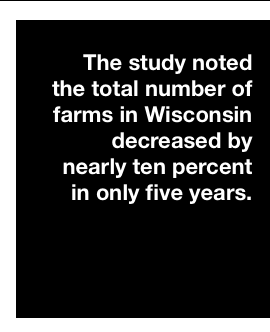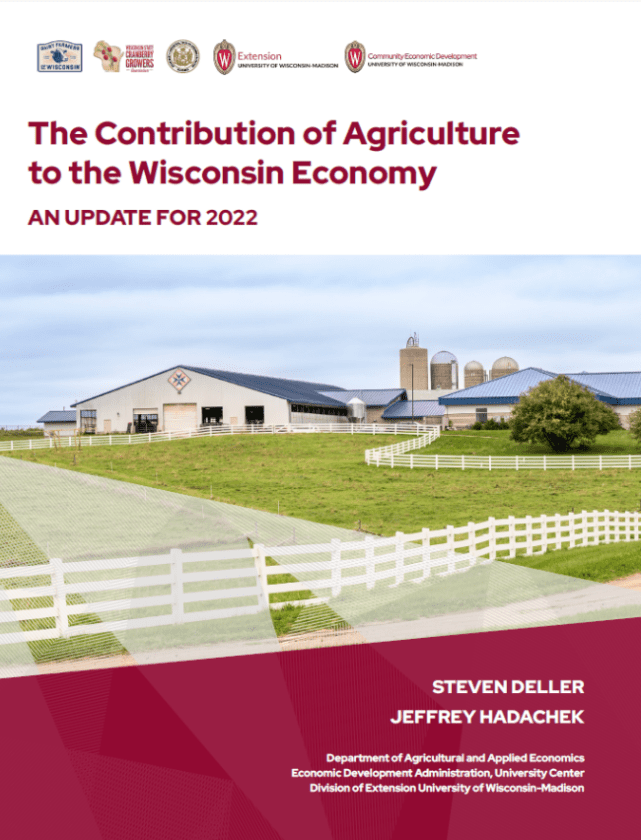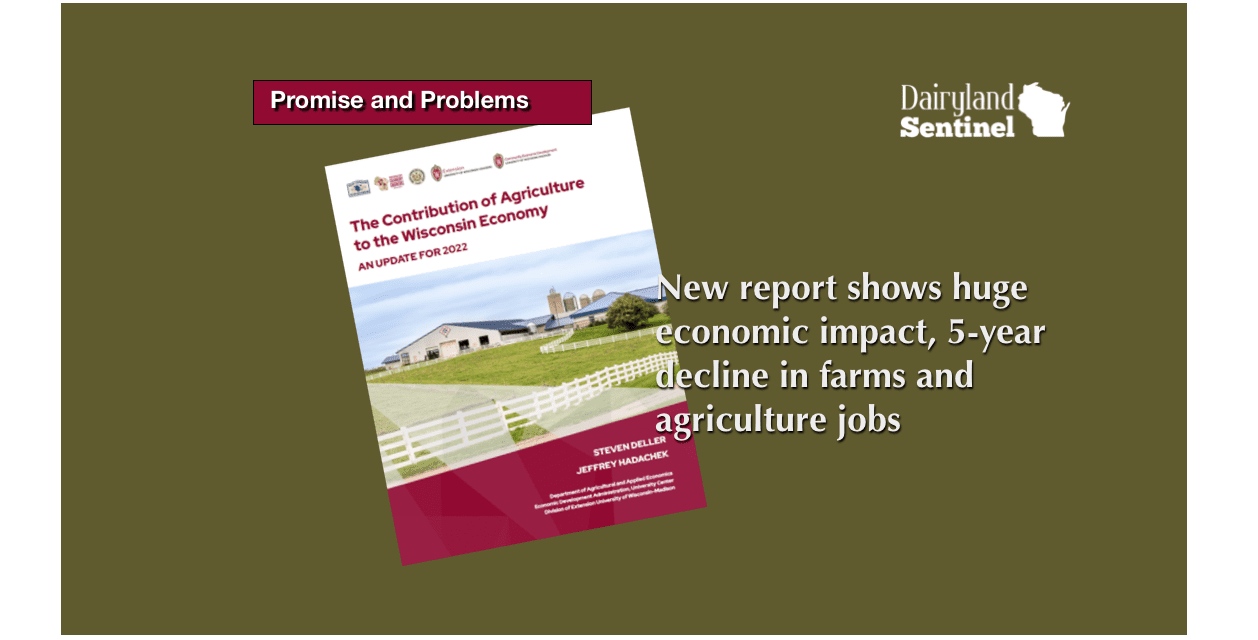University of Wisconsin researchers Steven Deller and Jeff Hadachek are out with a comprehensive new report on the economic impact of agribusiness in Wisconsin.
Their study, The Contributions of Agriculture to the Wisconsin Economy (2024) shows that while the economic impact of Wisconsin’s Ag sector exceeds $116 billion, there were nearly 84,000 fewer people employed in agricultural production and food processing sectors in 2022 than just five years prior.

The study notes “Together, the Wisconsin agricultural production and food processing sectors contributed a combined $116.3 billion in industrial revenues in 2022 (14.3% of the state total), an increase of 10.9% from 2017. The contribution to employment, however, declined from 437,700 jobs in 2017 to 353,900 jobs in 2022, a decline of 19.1%.”
- Labor income (wages, salaries, and proprietor income)decreased by 5.5% going from $22.5 billion in 2017 to $21.2 billion in 2022. There was a modest increase in total income (labor income plus all other sources of income), going from $37.6 billion in 2017 to $37.78 billion in 2022.
- Dairy, both on-farm and processing (which is dominated by cheese production), contributes $52.8billion to total industrial revenues or sales (6.5% of state total), 120,700 jobs (3.3%), $7.9 billion in labor income (3.2%) and $13.7 billion in total income (3.4%). It is important to note that dairy processing accounts for much of the contribution of dairy.
- “All agriculture”, combined on-farm and food processing, contributes $116.3 billion (14.3% of the state total) to industrial sales or revenues, 353,900 jobs (9.5% of the state total), $21.2 billion to labor income (8.7%), and $37.8 billion (9.4%) to total income.
- On-farm activity contributes $30.5 billion to industrial revenue (3.7% of the state total), 143,690 jobs(3.9%), $6.4 billion to labor income (2.6%), and $13.7 billion to total income (3.4%).
- Food processing, including beverages, contributes $107 billion to industrial revenues (13.1% of state total), 298,400 jobs (8.1%), $18.7 billion to labor income (7.7%), and $32.4 billion to total income (8.1%).
The researchers noted that despite the declining number of farms between 2017 and 2022 (from 64,793 in 2017 to 58,521 in 2022, there was an increase in the number of food processors (including beverage manufacturers) over the same period (1,160 in 2017 to 1,245 in 2021 (most current year available)..
The work was supported by contributions from:
- Dairy Farmers of Wisconsin
- Wisconsin State Cranberry Growers Association
- Economic Development Administration (University Center in the Community Economic Development Program Area, UW-Madison, Division of Extension)
- State of Wisconsin Department of Agriculture, Trade and Consumer Protection
The report is composed of several sections including historical trend analysis, economic cluster analysis, and the contribution to the Wisconsin economy analysis. As in prior studies in this line of work, we conduct the analysis at the state level and the eight subregional groupings of counties.
You can access the report by clicking on the image, below.

















